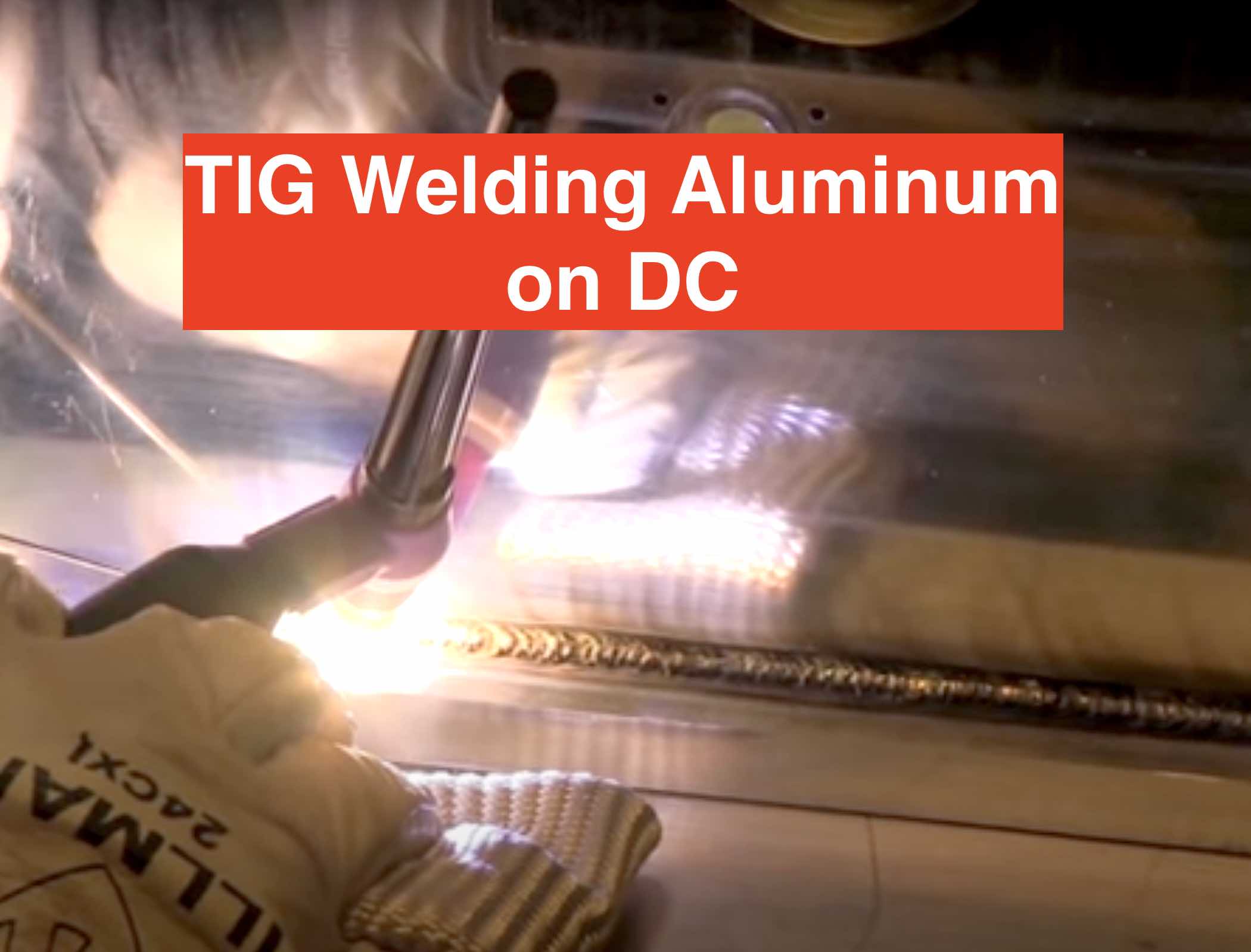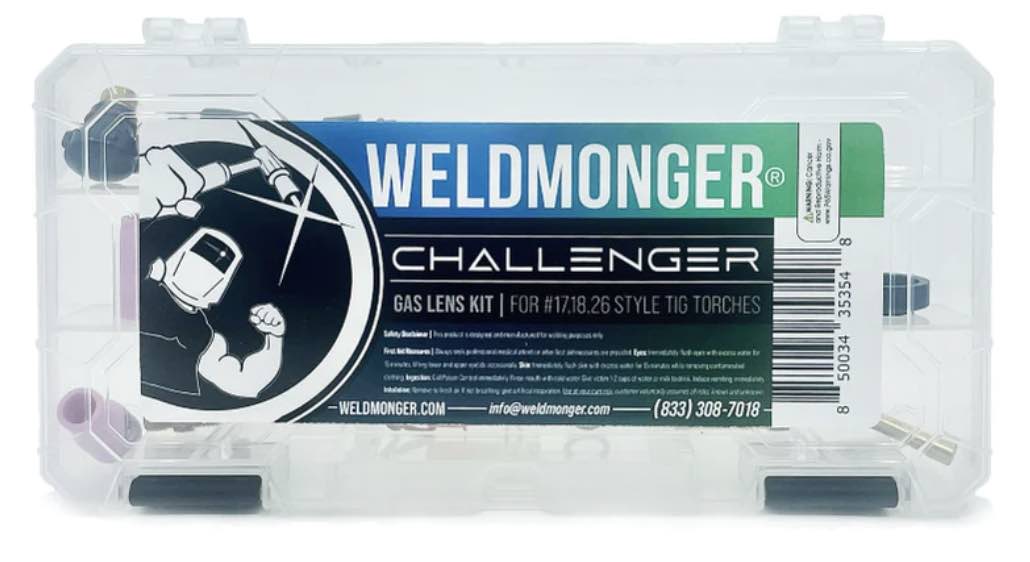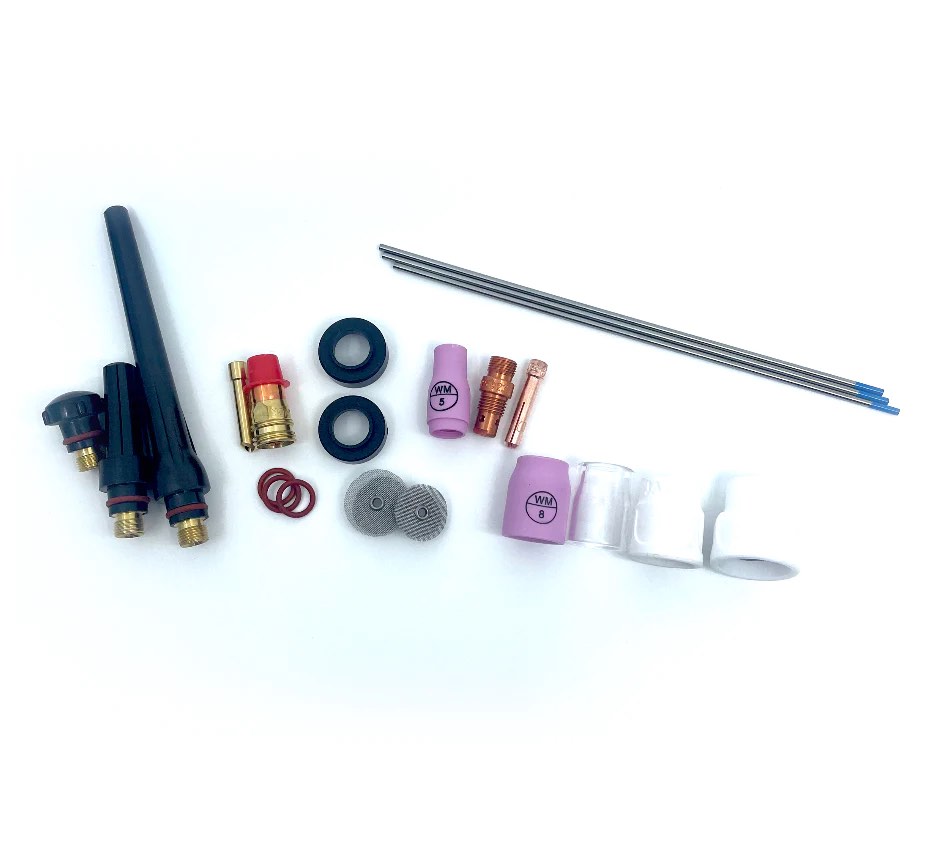How to TIG Weld Aluminum with DC
- HOME
- TIG WELDING ALUMINUM
- How to Tig Aluminum
- How to Tig Weld Aluminum With Dc
...Introducing the New WeldMonger Challenger TIG kit that includes the most frequently used Cups.
How to TIG weld aluminum with DC current
If you just searched for "how to tig weld aluminum with DC" you just found a page with a video comparing DC welding and AC welding on aluminum with instructions on how to tig weld aluminum with DC and helium.
Unfortunately, helium gas has become more and more expensive but it is still worth the cost when you need to weld thick aluminum..
In TIG (Tungsten Inert Gas) welding of aluminum with DC (Direct Current), helium gas is most often used as the shielding gas. Helium offers several advantages that make it suitable for this welding process:
Helium gas is commonly used in Tungsten Inert Gas (TIG) welding processes, especially when welding aluminum. Here are some benefits of using helium as a shielding gas for TIG welding aluminum:
- Increased heat input: Helium has a higher thermal conductivity compared to other shielding gases like argon. It transfers heat more efficiently, allowing for higher heat input during welding. This is particularly beneficial when welding thick aluminum sections where preheating is not practical and where distortion limitations are tight
- Deeper penetration: The use of helium in TIG welding aluminum on DC facilitates deeper weld penetration. The higher heat input and increased arc energy lead to greater weld pool fluidity and improved fusion between the base metal and filler material. This is especially advantageous when working with thicker aluminum components.
- Faster welding speeds: Due to its higher heat input and improved penetration capabilities, helium gas enables faster welding speeds when TIG welding aluminum on DC current. This can result in increased productivity and reduced overall welding time.
It's worth noting that pure helium is the main shielding gas for TIG welding aluminum on DC current. Argon-helium mixtures are also sometimes used, as they offer a balance between the benefits of helium and the affordability of argon. The specific gas mixture and its proportions can vary depending on the welding application, material thickness, and other factors. Welders often experiment and adjust the gas composition to achieve the desired results.

More on Helium for tig welding aluminum
When helium is added to the shielding gas mixture, it can have several effects on the welding process and the resulting weld:
- Penetration: Helium has a higher ionization potential compared to argon. This means that it creates a more focused and concentrated arc, which can lead to deeper penetration into the base metal. The increased penetration can be advantageous when welding thicker aluminum sections.
However, there are a few considerations when using helium as a shielding gas for TIG welding aluminum:
- Cost: Helium is generally more expensive than argon, so the increased cost of helium may be a factor to consider.
- Weld Pool Fluidity: Helium can reduce the surface tension of the weld pool, making it more fluid. This can affect weld pool shape and control, and may require adjustments to welding technique.
- Gas Flow Rates: Due to its lower density compared to argon, helium requires higher flow rates to provide adequate shielding.
Overall, the use of helium in TIG welding aluminum can offer benefits such as increased penetration, better heat input, and improved cleaning action.

















